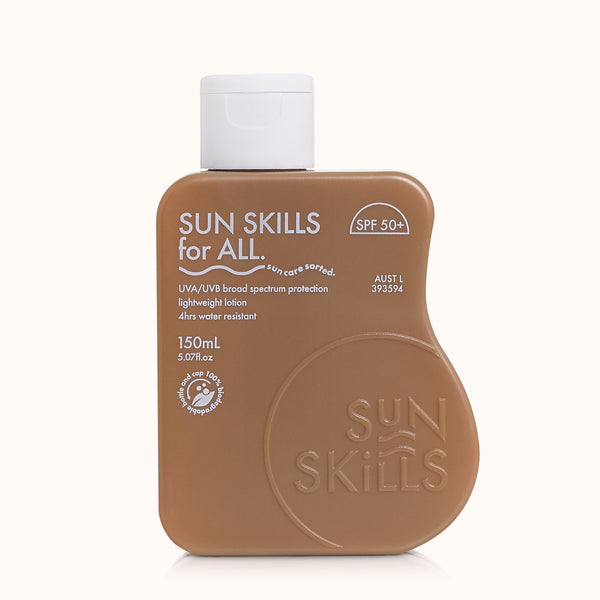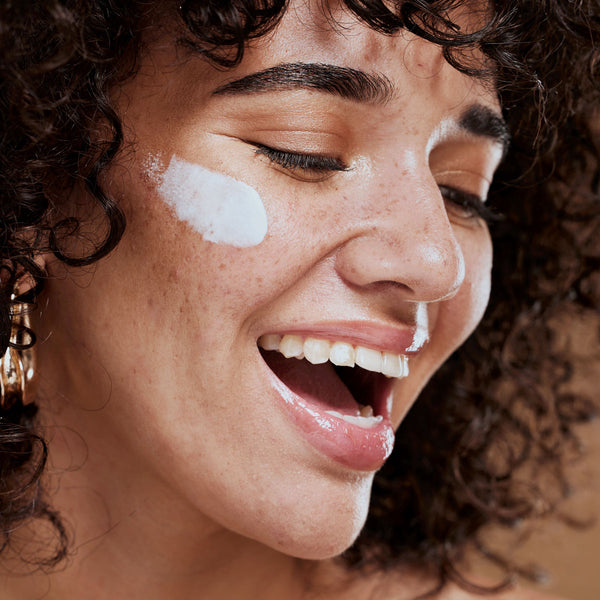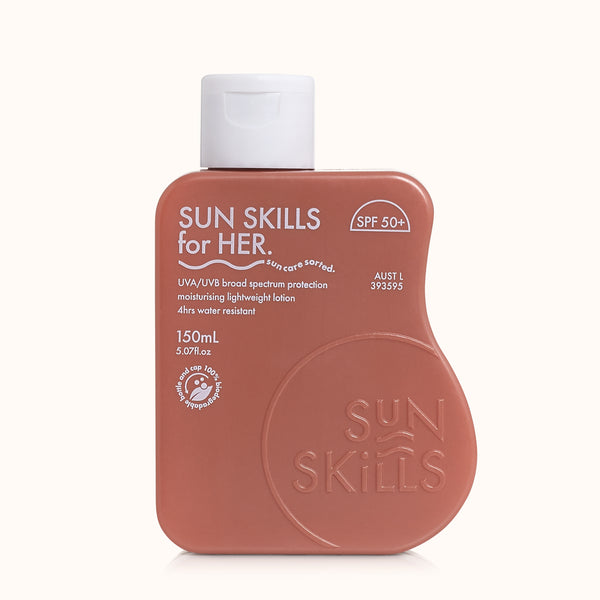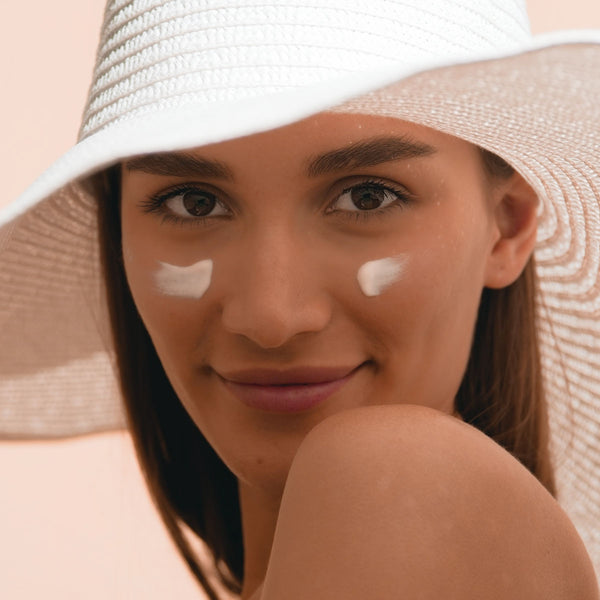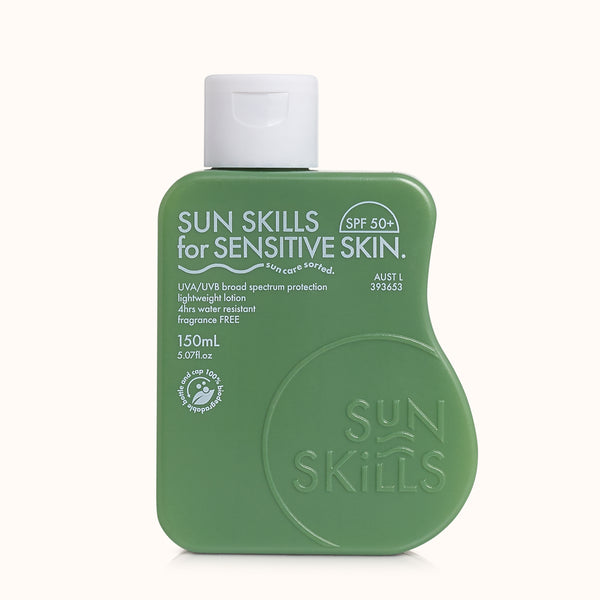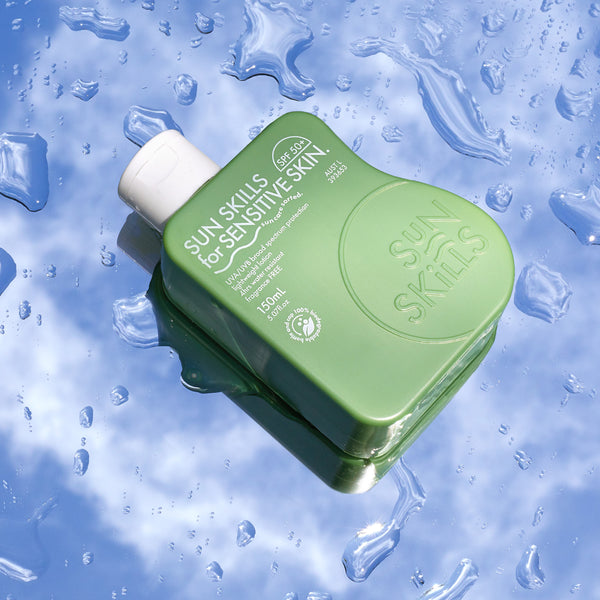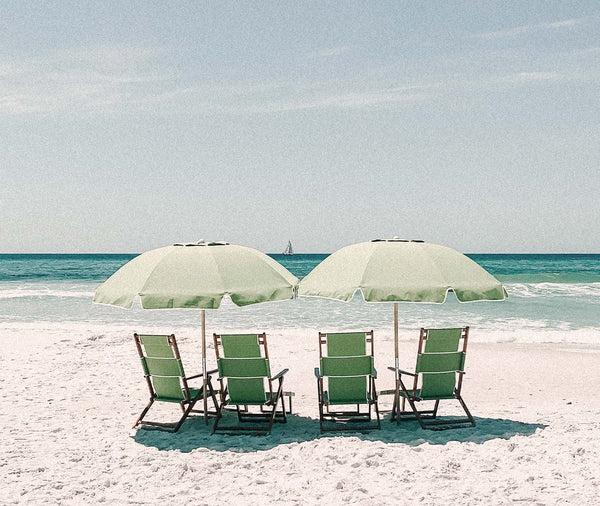You’ve probably heard how harmful the sun’s rays are but what is the UV index and how does it actually work? The UV index measures the strength of ultraviolet (UV) radiation from the sun. It was designed to educate you about the level of UV radiation you might be exposed to and encourage you to be sun safe by wearing SPF 50+ sunscreen and being a shade seeker.
The UV index scale goes from 1 to 11 so, as you probably guessed, the higher the UV index the greater the risk of harm from UV radiation. Because UV rays can’t be seen or felt, you might be wondering how it’s calculated. Well, measurements are actually taken based on the amount of UV radiation reaching the earth’s surface while taking into account factors such as the time of day, altitude and cloud cover.
We know you probably have a ton of questions about the UV index and how you can plan your sun care and skin care around the weather, so let’s get right into it.
When Is UV Highest?
The intensity of UV radiation varies throughout the day and can be easily influenced by the time of year, latitude, altitude and cloud cover. In general, the UV index is highest during the middle of the day which is when the sun is at its highest point in the sky and the rays are most direct and intense.
During the summer months, the UV index is typically higher because the days are longer and the angle of the sun is higher in the sky. At high latitudes, like in the northern hemisphere, the UV index can be particularly high thanks to the reflection of UV radiation off snow and ice.
Can The UV Index Be High When It’s Cloudy?
So yes, this means that the UV index can be high even when it's cloudy. While clouds can reduce the amount of radiation reaching you, UV rays can still penetrate them so don't completely block them out. This means it’s still possible to get sunburned and be at risk of other harmful effects from the sun like premature skin ageing.
It's always a good idea to take precautions to protect your skin from the sun, regardless of the time of day and cloud cover. Make sun protection part of your morning ritual by applying Sun Skills for HER SPF 50+ under your makeup. Enriched with native Kakadu plum to protect your skin against free radicals, the fast-absorbing formula dries with a clean finish so you can wear it daily without worrying about chemical-induced breakouts.
Why Is The UV Index In Australia So High?
If you live in the land down under, you probably know how hot and humid those Australian summers can be. Well, that’s all thanks to Australia being closer to the equator than most other countries meaning it receives a higher amount of UV radiation.
Oh and there’s also a hole in the ozone over the Antarctic which has an impact on the UV levels experienced in Australia. I know it seems like we’re miles from arctic polar bears and ice caps but this hole actually lets more UV radiation reach the earth's surface.
What UV Index Level Is Safe?
It might seem overwhelming but we’re here to break some bad news, there’s actually no UV index level that is completely safe! Any exposure to UV radiation can have harmful effects on your health over time whether it’s sunburn, skin aging or an increased risk of skin cancer.
Lower levels of UV radiation are generally considered to be less harmful than higher levels which means it’s generally safe to be outside without any precautions if the index is 0 to 2. For UV index levels of 3 to 7, it’s recommended to protect your skin from the sun by wearing protective clothing, using SPF 50+ sunscreen and seeking shade when possible. Once the index is between 8 and 11, things start to get a lot more serious so it’s especially important to take sun-safe precautions as your skin can burn in just minutes. You’ll also want to be mindful of the UV rays reflecting off surfaces like water, sand and snow as these can also increase your exposure to UV radiation.
What UV Index Is Best For Tanning?
This is where things get really serious so make sure to listen up, it’s never recommended to intentionally tan. Unless it’s from the bottle, there’s actually no such thing as a healthy natural tan. Your skin darkens in response to the damage caused by ultraviolet radiation so it’s trying to protect itself from further harm, take a moment to let that sink in.
Whether you’re tanning from the sun or from a tanning bed, it can have harmful long-term effects on your health including sunburn, premature skin ageing (yikes) and an increased risk of developing deadly skin cancer like melanoma. Even with sun protection, it’s never a bad idea to limit your exposure to the sun, especially during the middle of the day when UV levels are at their highest.
Instead of trying to get a tan, it's better to focus on protecting your skin from the sun and practicing a healthy skincare routine with clean Australian products.
What UV Index Level Should You Avoid?
It's a good idea to take precautions to protect your skin from the sun at all UV index levels but it's especially important to avoid extended exposure when the index levels are 8 to 11. High to extreme levels of UV radiation can cause sunburn in as little as 15 minutes, so sunscreen and sun protective clothing like your favourite bucket hat and sunglasses are a must!
An easy way to tell how much UV exposure you’re getting is to look at your shadow, if it’s taller than you then your exposure is likely to be lower. If your shadow is shorter than you, usually around midday, then you’re likely being exposed to high levels of UV radiation.
What UV Index Needs Sunscreen?
It’s recommended to use a broad-spectrum sunscreen with a high SPF rating every morning, regardless of the UV index level.
Finding a weightless SPF 50+ face, neck and decolletage sunscreen that suits your skin type means you’ll actually want to wear it every day. Whether you’re layering under makeup or wearing for daily anti-ageing protection there’s a Sun Skills solution for every day of the week and season. Choose Sun Skills For SENSITIVE if you need to keep delicate skin smiling, or Sun Skills For ALL if you’re after something for the whole family. Just don’t forget to reapply liberally every two hours if you’re sweating or swimming!

